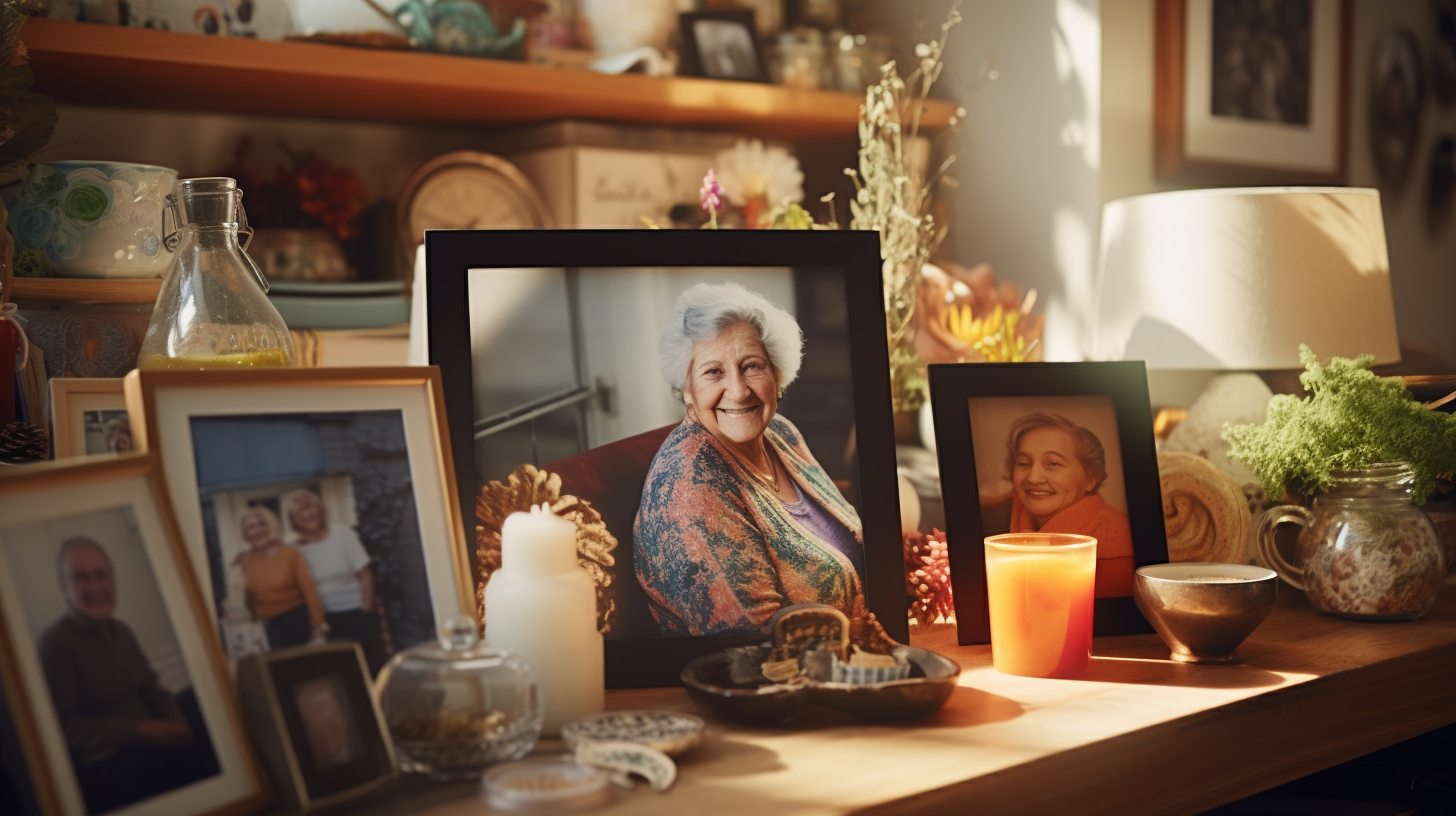You’re about to learn how effective communication plays a vital role in memory care and how SonderCare products can help facilitate better communication. By understanding the importance of communication in memory care, you’ll be able to create meaningful connections and enhance the well-being of your loved ones. Let’s explore how SonderCare’s innovative products can support you in this journey.
The Importance of Communication in Memory Care
When caring for a loved one with memory loss, it’s crucial to prioritize effective communication to foster connection and understanding. Communication challenges can arise due to the cognitive changes associated with memory loss, but there are effective communication techniques that can help facilitate meaningful interactions.
One technique is to use simple and clear language, avoiding complex sentences or jargon. Additionally, maintaining a calm and patient demeanor is essential, as individuals with memory loss may take longer to process information. Nonverbal cues, such as facial expressions and body language, can also help convey emotions and intentions.
It’s important to listen actively and give the person ample time to express themselves. Using visual aids, like pictures or gestures, can also enhance understanding. Lastly, creating a calm and quiet environment can minimize distractions and promote focused communication. By employing these techniques, you can strengthen your connection with your loved one and ensure effective communication despite the challenges of memory loss.
How SonderCare Products Facilitate Better Communication
SonderCare’s hospital beds are designed to enhance communication by providing a comfortable and safe environment for individuals in need of home care. These beds are equipped with advanced technology specifically designed for memory care. With built-in communication systems and easy-to-use interfaces, these beds promote effective communication between caregivers and their loved ones. Additionally, SonderCare recognizes the importance of establishing communication schedules in memory care. By setting regular times for interactions, caregivers can create a sense of routine and familiarity for individuals with memory loss. This not only helps in maintaining a connection but also reduces anxiety and confusion. SonderCare’s commitment to enhancing communication in memory care extends beyond just their products. In the next section, we will learn about effective communication strategies in memory care that can be implemented alongside SonderCare’s innovative technology.
Learn About Effective Communication Strategies in Memory Care
When it comes to communicating with your loved ones in memory care, it’s important to learn effective strategies that can help you connect and understand each other better. By using both verbal and non-verbal techniques, such as speaking slowly and clearly, maintaining eye contact, and using visual cues, you can enhance your communication and create a sense of comfort and reassurance. Additionally, technology can play a valuable role in communication, with tools like video calls and memory aids helping to bridge any gaps and keep your loved ones engaged and connected.
Verbal and Non-Verbal Techniques
One effective technique for communicating with your loved one in memory care is through the use of non-verbal cues, such as gentle touch or a warm smile. These non-verbal cues can convey love, comfort, and reassurance when words may not be understood or remembered. Here are three ways you can use verbal cues and body language techniques to communicate effectively:
- Maintain eye contact: When you speak to your loved one, make sure to maintain eye contact. This shows that you are present and engaged in the conversation, and it can help your loved one feel connected and understood.
- Use gestures: Use hand gestures or pointing to help clarify your message. For example, if you are asking if they want to eat, you can gesture towards the food or point to the menu options. This can help your loved one understand and respond to your question.
- Mirror their body language: Pay attention to your loved one’s body language and mirror it. If they are looking anxious or agitated, try to adopt a calm and soothing demeanor. Mirroring their body language can help create a sense of empathy and understanding.
The Role of Technology in Communication
Technology plays a crucial role in enhancing communication between caregivers and individuals receiving home care services. With the advancement of technology, there are now innovative tools and techniques that can greatly benefit those in memory care. Virtual reality has proven to be a powerful tool in memory care, allowing individuals to engage in immersive experiences that can stimulate their cognitive abilities and trigger memories. This can help improve their overall well-being and quality of life. Additionally, artificial intelligence has also played a significant role in communication. AI-powered devices can assist individuals with memory loss by providing reminders, answering questions, and even engaging in conversations. These advancements in technology have opened up new possibilities for communication and have the potential to greatly improve the care and support provided to individuals in memory care.
| Benefits of Virtual Reality in Memory Care | The Role of Artificial Intelligence in Communication |
|---|---|
| – Stimulates cognitive abilities | – Provides reminders and answers questions |
| – Triggers memories | – Engages in conversations |
| – Improves overall well-being | – Enhances communication and support |
What Do The Studies Say About Communication in Memory Care
Research studies have shown that effective communication in memory care can have a positive impact on the well-being and quality of life for individuals with memory loss. These studies have found that when communication is tailored to the individual’s needs and abilities, it can help reduce anxiety, improve mood, and enhance overall cognitive functioning. By understanding the importance of communication in memory care, you can create meaningful connections and provide the support and understanding that your loved ones need.
The Psychological Benefits of Effective Communication
Effective communication can have a profound impact on your loved ones in memory care, bringing them increased connection and a sense of understanding. Here are three key elements to consider when communicating with individuals in memory care:
- Importance of active listening: By truly listening to their words, emotions, and needs, you can create a safe and supportive space for them to express themselves. Engage in active listening by maintaining eye contact, nodding, and providing verbal cues to show that you understand and are present in the conversation.
- Nonverbal communication cues: Remember that words are not the only form of communication. Pay attention to their facial expressions, body language, and tone of voice. These nonverbal cues can provide valuable insights into their emotions and feelings, allowing you to respond in a more empathetic and compassionate manner.
- Validation and empathy: Show empathy by validating their feelings and experiences. Acknowledge their emotions and let them know that you understand. This helps them feel heard and respected, fostering a deeper connection and a sense of being understood.
By incorporating these elements into your communication with loved ones in memory care, you can enhance their psychological well-being and create a more meaningful and fulfilling relationship.
Transition: Now, let’s explore some case studies that demonstrate how improved communication can significantly improve the quality of life for individuals in memory care.
How Can Families Improve Communication With Loved Ones in Memory Care
To improve communication with your loved ones in memory care, it’s important to establish a communication schedule that allows for regular and consistent interaction. Using visual aids and reminders can also be helpful in facilitating communication and providing cues for important information. By implementing these strategies, you can enhance communication and maintain a strong connection with your loved ones in memory care.
Setting Up a Communication Schedule
If your loved one is in memory care, setting up a communication schedule can help ensure regular and consistent contact with them. Effective communication is essential for maintaining a strong connection and providing emotional support. Here are three benefits of implementing a communication schedule:
- Increased sense of security: Knowing that there is a designated time to communicate with their loved ones can provide comfort and reassurance to individuals in memory care. It gives them something to look forward to and reduces feelings of isolation.
- Improved emotional well-being: Regular communication allows for the expression of emotions and thoughts, which can help reduce anxiety and stress. It provides an opportunity for individuals to share their experiences and feelings, promoting a sense of belonging and validation.
- Enhanced relationships: Consistent communication helps strengthen relationships between individuals in memory care and their loved ones. It allows for the exchange of memories, stories, and updates, fostering a sense of connection and closeness.
Using Visual Aids and Reminders
Using visual aids and reminders can greatly assist individuals in memory care by improving their ability to recall information and complete daily tasks. Visual aids such as pictures, charts, and calendars can help stimulate memory and provide a tangible reference for important information. Reminders, such as sticky notes and alarms, can serve as helpful prompts throughout the day, reminding individuals of important tasks and appointments. These visual aids and reminders create a sense of structure and routine, which is especially beneficial for individuals with memory impairments. Additionally, music therapy has shown to have a positive impact on individuals in memory care. Music has the ability to evoke emotions and memories, providing a means of communication and connection for those who may struggle with verbal communication. Incorporating familiar songs and melodies into daily routines can promote relaxation, reduce anxiety, and enhance overall well-being. By utilizing visual aids and incorporating music therapy, caregivers can create a supportive and enriching environment for individuals in memory care.
SonderCare’s Contribution to Enhancing Communication in Memory Care
At SonderCare, we understand the challenges of communicating with loved ones in memory care. That’s why our hospital beds are designed with features that enhance communication and connection. From intuitive controls to special features that aid in communication, our beds are crafted to make the caregiving experience easier and more meaningful for both you and your loved one.
How SonderCare Beds Are Designed for Comfort and Ease of Communication
When using SonderCare beds, you will experience a high level of comfort and ease of communication due to their thoughtful design. Here are three benefits you can expect:
- Improved Comfort: SonderCare beds are designed to provide maximum comfort for the user. With features like a four-section mattress support platform, customizable positioning options, and a weight capacity of up to 500 lbs, these beds ensure that you or your loved one can find the perfect position for rest and relaxation.
- Enhanced Safety: Safety is a top priority when it comes to SonderCare beds. The wireless hand control allows for easy adjustments without the risk of entanglement, and the backup battery system ensures that the bed can still be operated during power outages. Additionally, the lockout control system prevents accidental adjustments, providing peace of mind for both the user and the caregiver.
- Improved Communication: Effective communication is essential in any caregiving setting. SonderCare beds are designed to facilitate communication between the user and their caregivers. With intuitive controls and features like an ultra low floor height and motion sensor light system, caregivers can easily attend to their loved ones’ needs while maintaining a safe and comfortable environment.
With SonderCare beds, you can enjoy the benefits of comfort, safety, and improved communication. In the next section, we will explore the special features that aid in communication and further enhance the caregiving experience.
Special Features That Aid in Communication
You will find that SonderCare beds offer special features that make communication easier and more efficient. These beds are designed with the needs of both the user and the caregiver in mind, ensuring a comfortable and seamless experience. SonderCare beds come equipped with a range of communication aids to enhance the connection between loved ones. One such feature is the built-in speaker system, allowing for clear and easy communication without the need for additional devices. The beds also have an integrated video call function, enabling face-to-face conversations and virtual visits. Additionally, SonderCare beds have a user-friendly interface that allows for intuitive operation, making it simple for users to stay connected with their loved ones. With these special features and communication aids, SonderCare beds are revolutionizing the way we connect and communicate in the realm of home care.
Effective communication with loved ones in memory care is a bridge that connects hearts and memories. Patience, empathy, and adaptability are key tools in this journey. By embracing these principles and employing creative, non-verbal methods when necessary, you can maintain meaningful connections, provide comfort, and enrich the lives of those you cherish. These moments of connection transcend the challenges of memory loss, affirming the enduring power of love and understanding in the face of adversity.
- example
Frequently Asked Questions About Benefits of Memory Care for Seniors
Choosing a hospital bed for your home involves considering factors like the user’s medical needs, bed type (manual, semi-electric, electric), adjustability features, mattress compatibility, size, budget, and available space.
Consult with the user’s healthcare provider to understand their medical condition, mobility limitations, and specific requirements. This information will guide you in selecting a bed that addresses their needs.
Hospital beds come in manual, semi-electric, and electric models. Manual beds require manual adjustments, semi-electric beds have electric head and foot adjustments, and full-electric beds offer complete electric adjustability.
Adjustability features are crucial as they allow the user to find comfortable positions for sleep, resting, and activities. Look for beds with smooth adjustments for the head, foot, and overall height.
Hospital beds come in various sizes, similar to regular beds (twin, full, queen). Choose a size that fits the user comfortably and fits well within the available space.
Set a budget based on the user’s needs and financial capacity. Consider the cost of the bed itself, any necessary accessories, and potential ongoing costs for maintenance and replacement parts.
Measure the available space in the room where the bed will be placed. Ensure there’s enough room for the bed to be adjusted and for caregivers to move comfortably around it.
If possible, try out the bed at a local medical supply store or showroom to assess its comfort and features. If not, read customer reviews and research thoroughly before making a decision.
Look for beds with sturdy frames, lockable casters, secure side rails, and emergency power-down options. These features ensure the user’s safety during adjustments and transfers.
Follow the manufacturer’s maintenance guidelines and keep the bed clean and well-lubricated. Regularly inspect for any loose screws or parts, and address any issues promptly to ensure the bed’s longevity.
Yes, involving the healthcare provider ensures that the chosen bed meets the user’s medical needs and provides the necessary comfort and support. They can offer valuable recommendations based on the user’s condition.
















